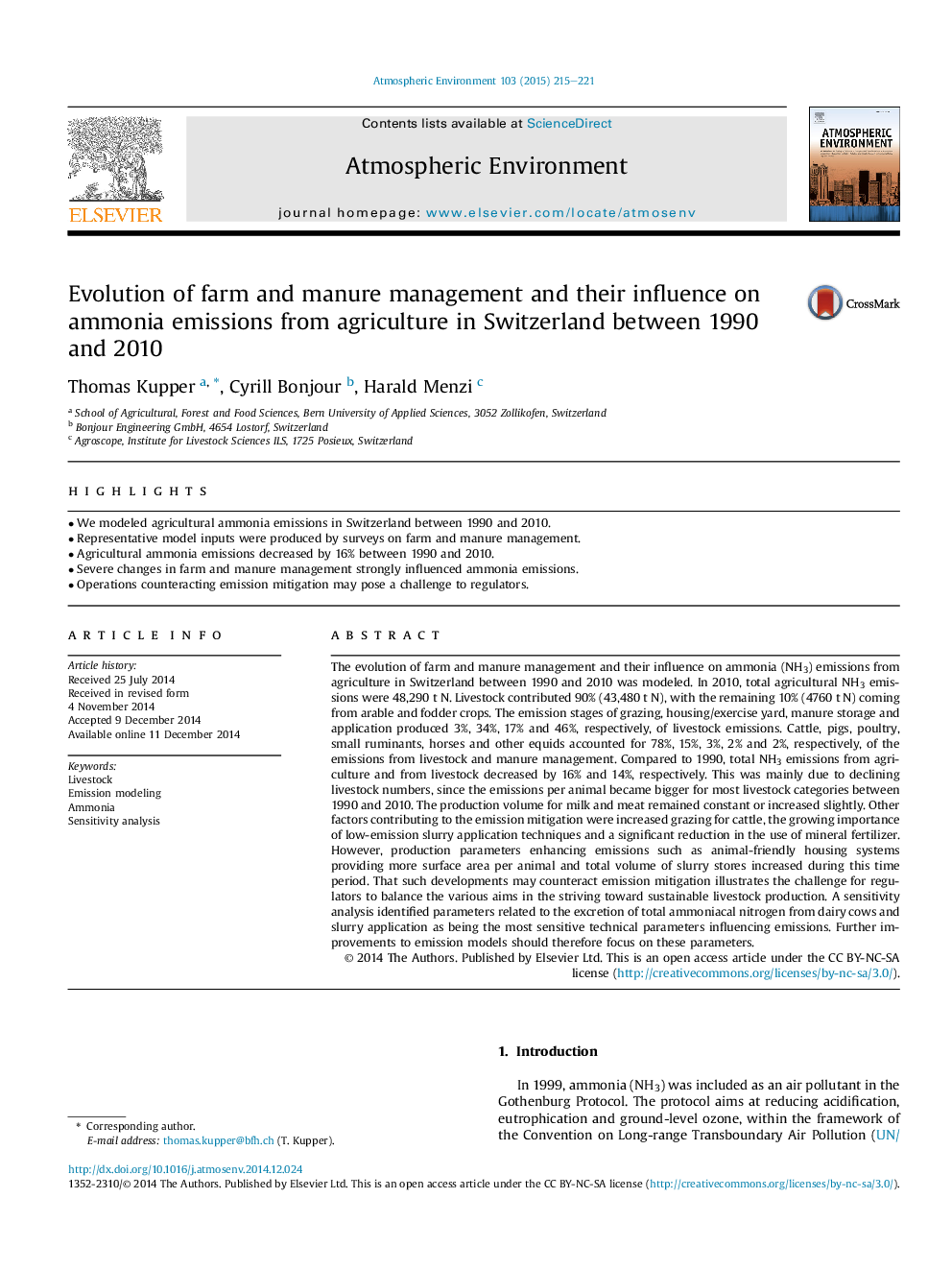| کد مقاله | کد نشریه | سال انتشار | مقاله انگلیسی | نسخه تمام متن |
|---|---|---|---|---|
| 6338518 | 1620368 | 2015 | 7 صفحه PDF | دانلود رایگان |
- We modeled agricultural ammonia emissions in Switzerland between 1990 and 2010.
- Representative model inputs were produced by surveys on farm and manure management.
- Agricultural ammonia emissions decreased by 16% between 1990 and 2010.
- Severe changes in farm and manure management strongly influenced ammonia emissions.
- Operations counteracting emission mitigation may pose a challenge to regulators.
The evolution of farm and manure management and their influence on ammonia (NH3) emissions from agriculture in Switzerland between 1990 and 2010 was modeled. In 2010, total agricultural NH3 emissions were 48,290 t N. Livestock contributed 90% (43,480 t N), with the remaining 10% (4760 t N) coming from arable and fodder crops. The emission stages of grazing, housing/exercise yard, manure storage and application produced 3%, 34%, 17% and 46%, respectively, of livestock emissions. Cattle, pigs, poultry, small ruminants, horses and other equids accounted for 78%, 15%, 3%, 2% and 2%, respectively, of the emissions from livestock and manure management. Compared to 1990, total NH3 emissions from agriculture and from livestock decreased by 16% and 14%, respectively. This was mainly due to declining livestock numbers, since the emissions per animal became bigger for most livestock categories between 1990 and 2010. The production volume for milk and meat remained constant or increased slightly. Other factors contributing to the emission mitigation were increased grazing for cattle, the growing importance of low-emission slurry application techniques and a significant reduction in the use of mineral fertilizer. However, production parameters enhancing emissions such as animal-friendly housing systems providing more surface area per animal and total volume of slurry stores increased during this time period. That such developments may counteract emission mitigation illustrates the challenge for regulators to balance the various aims in the striving toward sustainable livestock production. A sensitivity analysis identified parameters related to the excretion of total ammoniacal nitrogen from dairy cows and slurry application as being the most sensitive technical parameters influencing emissions. Further improvements to emission models should therefore focus on these parameters.
Journal: Atmospheric Environment - Volume 103, February 2015, Pages 215-221
